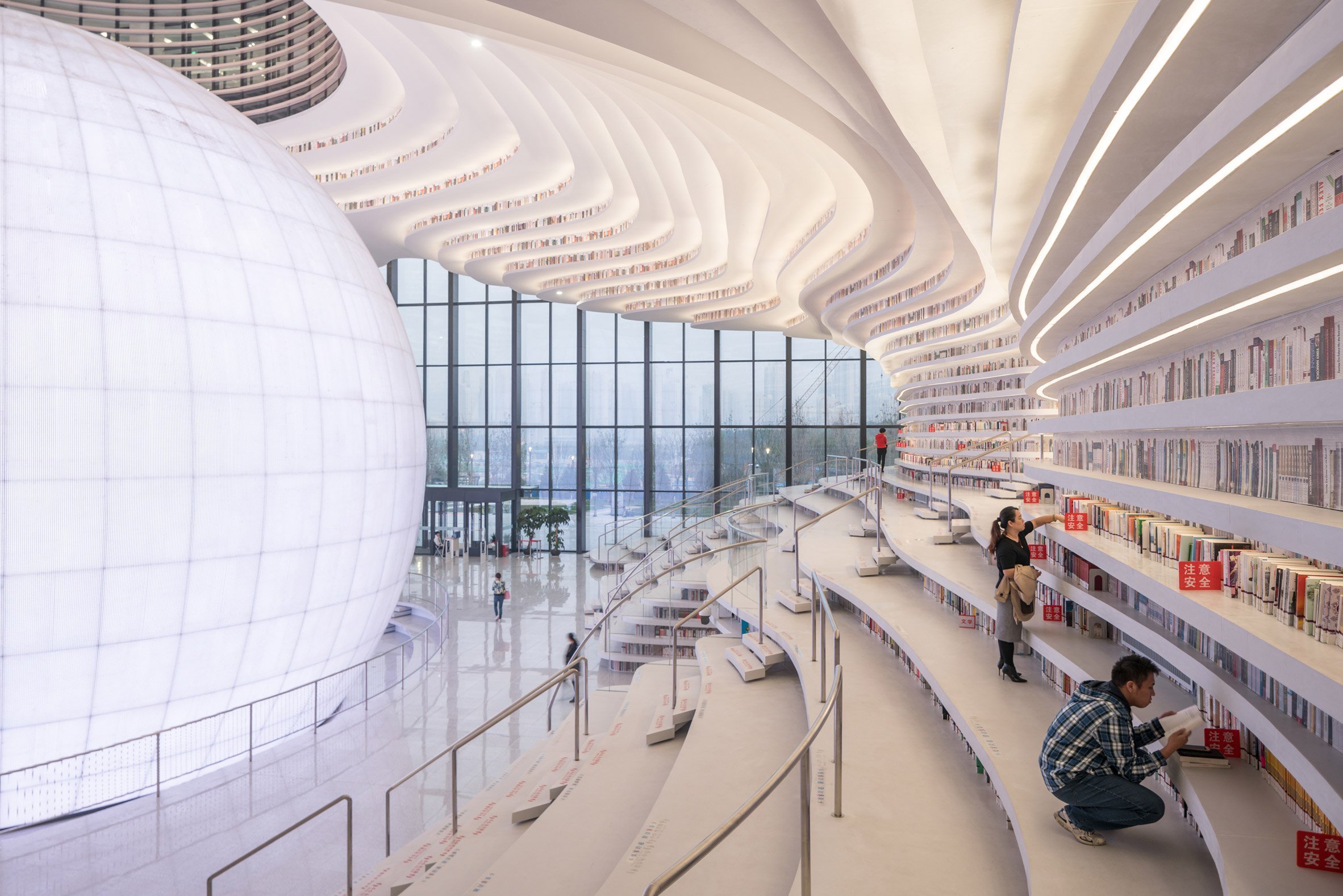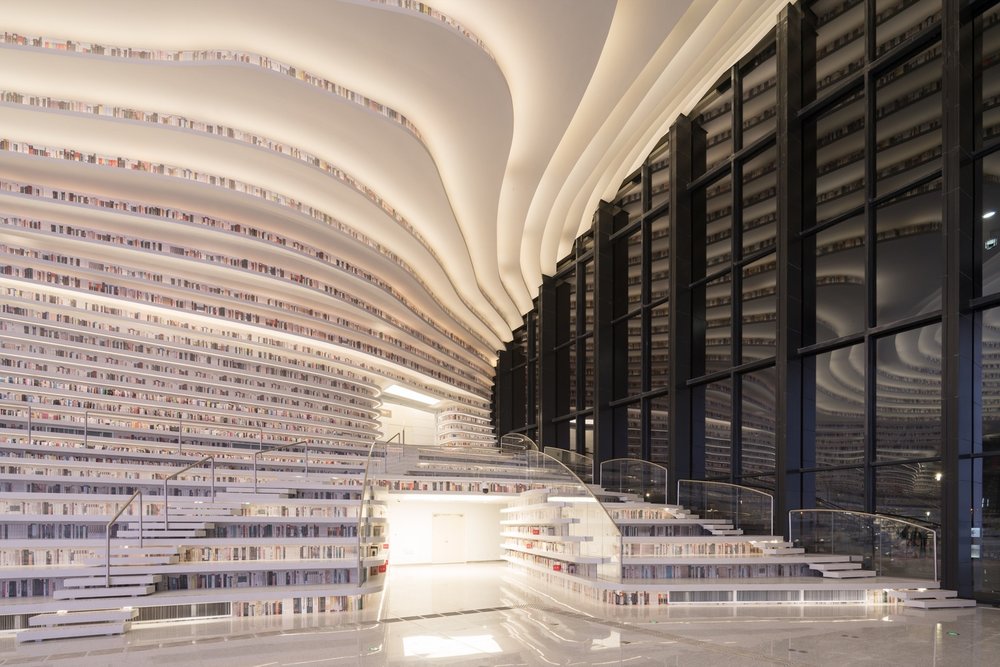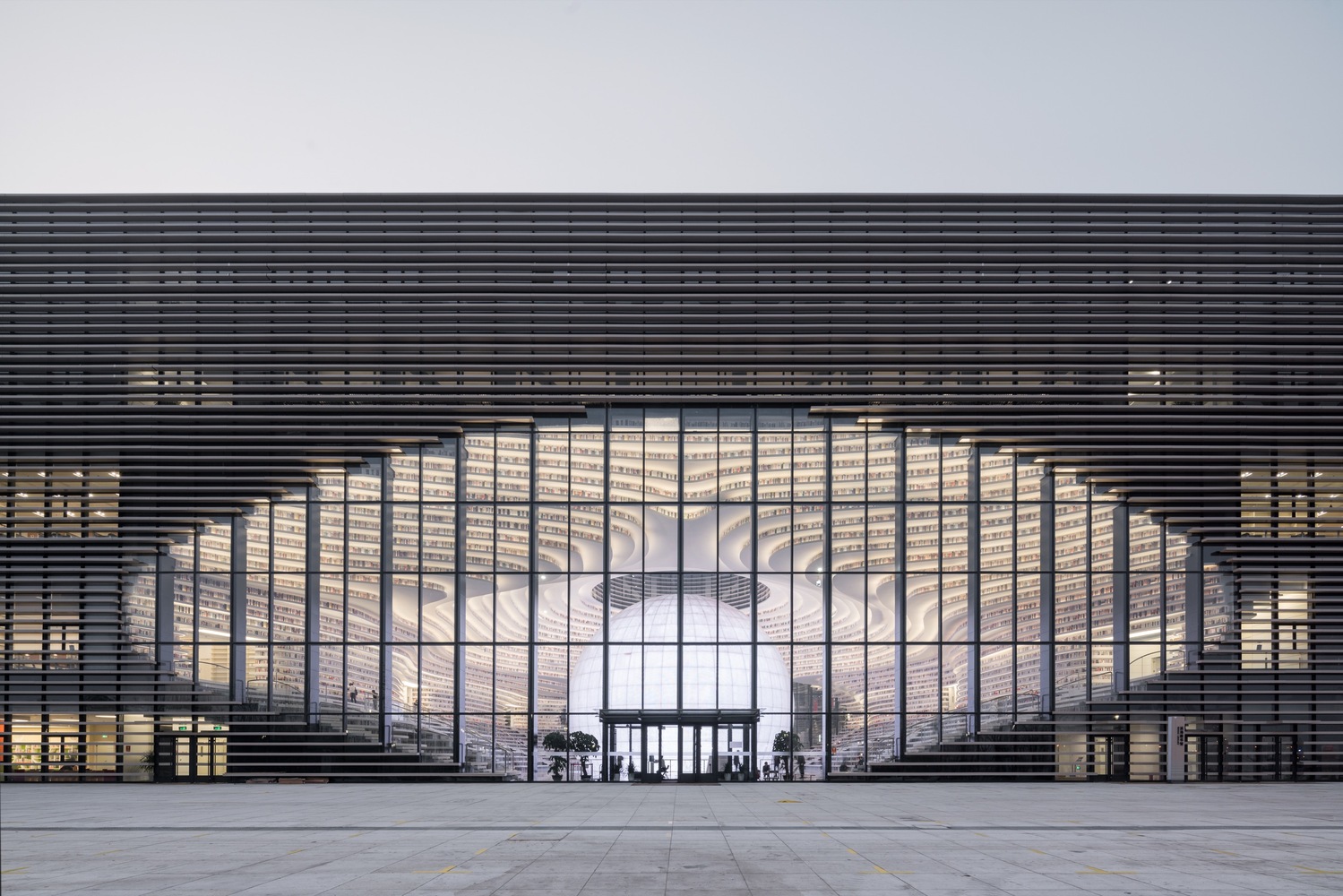China will be home to one of the most advanced and architecturally beautiful libraries in the world when construction finishes on the Tianjin Binhai Library. But considering the environmental impact of printed publications, and the lengths we’ve gone towards making physical books redundant these days, why-oh-why are we still building libraries? Perhaps there is more here at play than the written word.

These days you don’t need to step foot into a building to access education, with information as readily available as fast food when downloaded to your smart phone or Kindle. With Cloud technology, scholars now sit alongside Youtube enthusiasts and you can access everything – from your favourite magazines to indulgent soft-novels – to your heart’s content. So what is it about the hallowed printed word that still has monuments being built to house it?
There is something both timeless and fleeting in a printed idea that reminds us of our own mortality. Printed books start out so vibrantly with that fresh car smell, and are left collecting dust at the end of their lifetimes. Regardless of their use they exist in the material world and like us, have the potential to be held and considered by others. Online content is also timeless and fleeting but to a very different degree. For better or worse online information is permanent. It will never die, and it is never-ending. Bombarded by choice of varying quality, we engage with the digital for much shorter periods and consume content alongside other daily distractions.
As I am saying this, it is not lost on me that I write to you through the FIB Portal! The internet has done more for the advancement of the arts than anything that has come before. It has globally unified the creative scene, allowing us to expand our views and access international events, keeping tabs on what is happening in fashion and design around the world in real time. Binary to the internet, there is still a place for cultural institutions to augment artistic endeavours and platforms for artists to engage with the public.

Information that is given in the context of a physical structure is much easier to digest and draws our focus. Public spaces like art galleries and libraries aid this process by employing techniques like the ‘Quiet Policy’ to create a feeling of sacred spaces. In these forums, the authors sit amidst a forum of ideas and, by their inclusion, are bestowed a certain aura of cultural importance. To find an equivalent acceptance online would be to look at the number of likes, downloads or followers… rather limiting to great works that don’t translate well in the online space.

The new library performs only one of the intended functions of public spaces we see appearing around the world. The Tianjin building, which is designed by Dutch firm MVRD, is to form the Cultural Centre for the city of Binhai. The ground-breaking building, which features five-stories of terraced shelving that form an ‘eye’ at its centre, is in itself a sign of the Cities vision to ensure the future of architectural design. By providing creative spaces, particularly a library, the home to our shared ideas, we are actually ensuring artistic practice as well as heightening the output, experience and engagement of design.
What’s the best public creative space you’ve visited?







